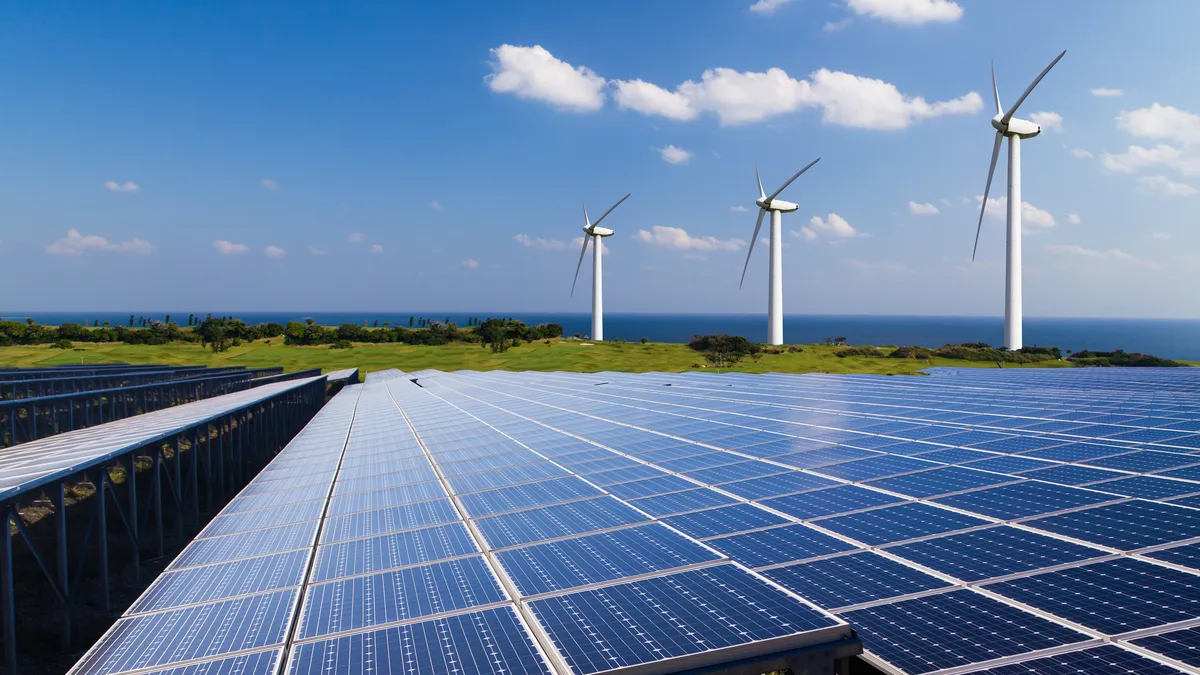Dive Brief:
-
The U.S. Department of the Treasury and Internal Revenue Service on Friday issued a notice of intent that offers a first glimpse at how the IRS will determine which renewable energy projects qualify for the 10% domestic content tax credit rider created by the Inflation Reduction Act.
-
The IRA contains two tiers of domestic content requirements — one for steel and iron components and one for manufactured products. Friday’s notice begins to define how individual project components will fall into each of the two categories.
-
Industry groups generally praised the direction outlined in the initial guidance, but Senate Finance Committee chair Ron Wyden, D-Ore., said he’ll seek to increase domestic content to boost U.S. manufacturing.
Dive Insight:
The IRS is one step closer to defining how much of the materials that go into a renewable energy project must be made in the U.S. to qualify for the domestic content tax credits created by the IRA.
Friday’s guidance began to sort common renewable energy project components into the two categories created by the IRS according to frameworks administered by the Federal Transit Administration. The U.S. Department of the Treasury said it is still open to considering other approaches to classification.
Under the IRA, renewable energy projects must incorporate 100% U.S.-made iron and steel to qualify for the 10% domestic content tax credit rider. For project components considered “manufactured products,” 40% of the equipment installed at solar and land-based wind projects must be made in the U.S. Offshore wind facilities may qualify for the rider if 20% of the manufactured equipment is produced in the U.S., although the minimum domestic content requirement for manufactured components increases to 55% for both types of projects after 2026 and 2027, respectively.
According to the guidance, steel photovoltaic module racking should be held to the higher 100% domestic content standard, while the photovoltaic modules themselves will be considered “manufactured products” subject to the lower standard.
Steel and iron parts inside components considered “manufactured products” do not need to be made in the U.S. to qualify, according to the guidance. Because the percentages are based on overall project costs, the guidance also begins to define which labor costs will count toward the domestic content standard.
Allison Nyholm, vice president of government affairs at the American Council on Renewable Energy, praised the Treasury Department’s adoption of a lower 40% standard for solar modules.
Under this guidance, wafers for solar projects need not be US manufactured, she said. And steel and iron must meet the melted and poured standard consistent with FTA “and this is something that industry is familiar with so there is certainty and a level of comfort.”
“We are encouraged by Treasury’s solutions to meet the manufactured product test, which are consistent with recommendations from ACORE and others, and we look forward to projects moving forward under this guidance immediately,” Gregory Wetstone, ACORE’s president and CEO, said in a statement.
The American Clean Power Association and Solar Energy Industries Association similarly praised the IRS release. Wyden, however, issued a statement criticizing the Biden Administration for not holding renewable energy projects to higher standards.
“America’s solar energy supply chain is only beginning to recover after the Chinese government and others nearly wiped out solar manufacturing in this country and stole tens of thousands of jobs,” he said.
Wyden said he will “look for any opportunity” to push domestic content requirements further than what the Biden administration has put in place.














